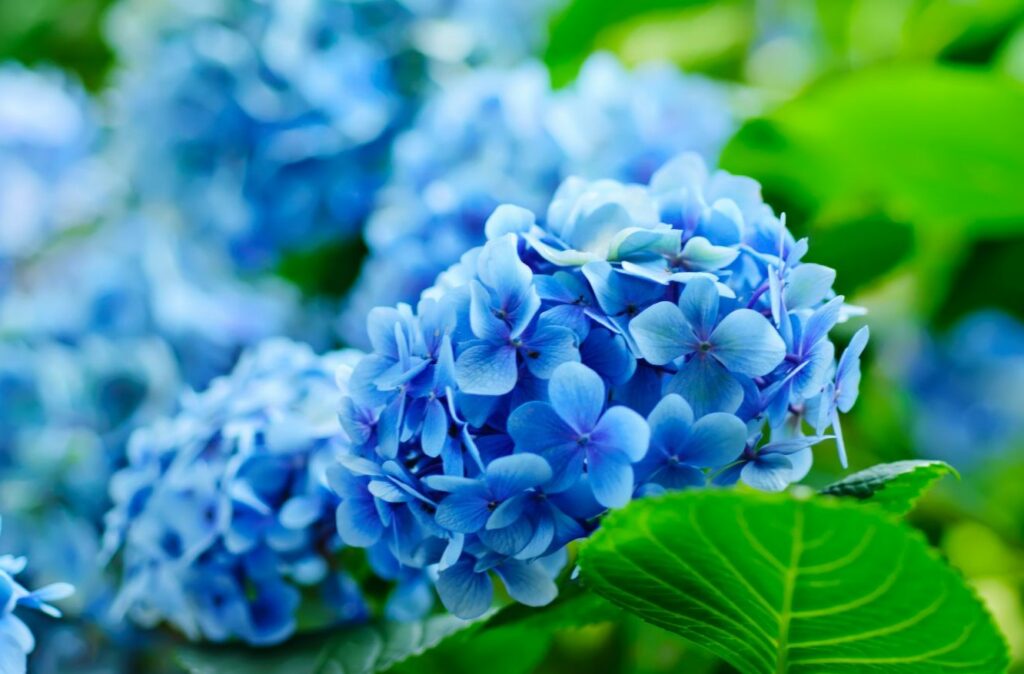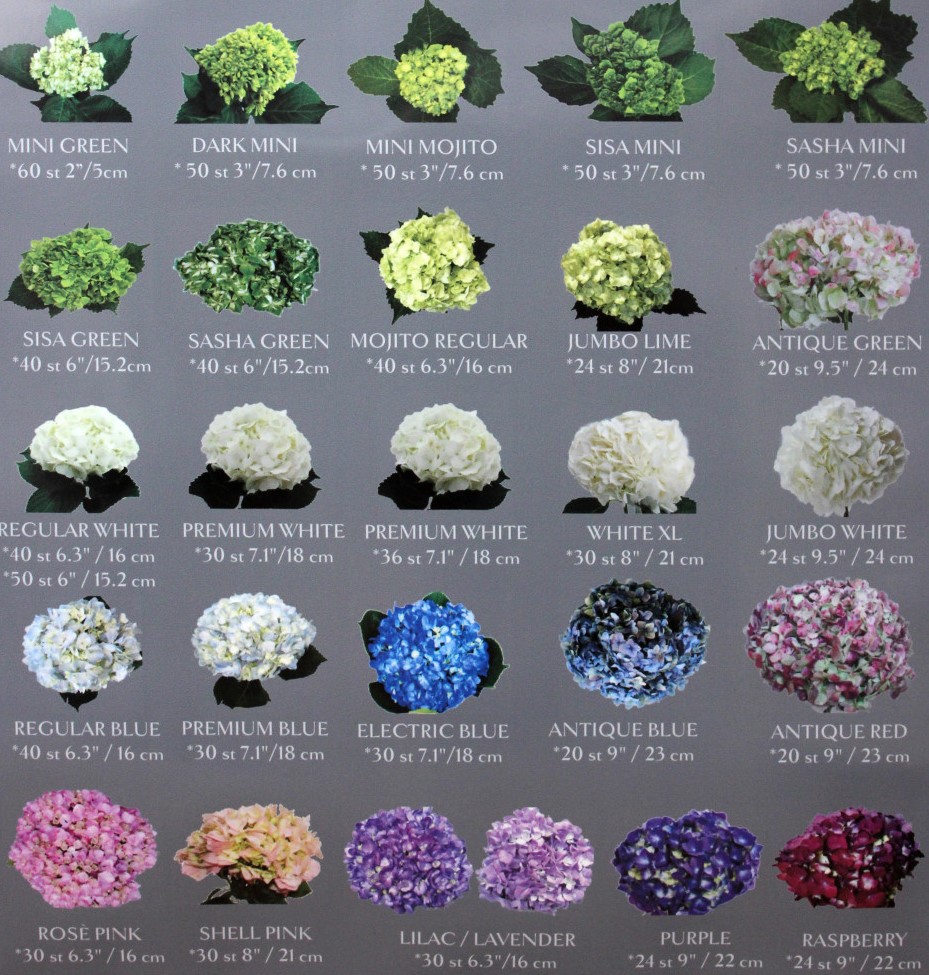How to Keep Hydrangeas Blue: Unlocking the Secrets:
Hydrangeas, with their large, vibrant blooms, are a beloved addition to gardens around the world. Among the various colors these flowering shrubs can display, the enchanting blue hydrangeas stand out as particularly captivating. However, achieving and maintaining the coveted blue hue can be a bit elusive, as hydrangeas are known for their ability to change colors based on soil pH. In this comprehensive guide, we will explore the fascinating world of hydrangeas and delve into the specific techniques and tips to keep them beautifully blue.

How to Keep Hydrangeas Blue
Hydrangeas are popular flowering shrubs known for their large, colorful blooms. The color of hydrangea flowers can vary depending on the pH level of the soil in which they are planted. The pH level affects the availability of aluminum in the soil, which, in turn, influences the color of the hydrangea blooms.
To keep hydrangeas blue, you need to understand the relationship between soil pH and flower color. Here’s a brief explanation:
Acidic Soil (pH 5.5 or lower):
In acidic soil, hydrangeas tend to produce blue flowers. This is because aluminum is more soluble in acidic conditions, and the plant absorbs aluminum, leading to the development of blue pigments in the flowers.
Alkaline Soil (pH 7 or higher):
In alkaline soil, hydrangeas usually produce pink flowers. In alkaline conditions, aluminum becomes less available to the plant, and the flowers develop a pink color.
If you want to maintain or change the color of your hydrangea blooms to blue, you can take the following steps:
Test Soil pH:
Use a soil testing kit to determine the pH level of your soil. You can find these kits at garden centers or through online suppliers.
Adjust Soil pH:
If your soil is not already acidic, you can lower the pH by adding amendments such as elemental sulfur or aluminum sulfate. Follow the recommended application rates on the product packaging.
Mulch with Pine Needles or Oak Leaves:
Mulching with acidic materials like pine needles or oak leaves can help maintain soil acidity over time.
Use Fertilizers with Aluminum:
Applying fertilizers that contain aluminum can also help enhance the availability of aluminum in the soil, promoting the development of blue flowers.
Choose the Right Hydrangea Variety:
Some hydrangea varieties are more likely to produce blue flowers regardless of soil pH. For example, the “Hydrangea macrophylla” varieties, often referred to as mophead or lace-cap hydrangeas, are known for their ability to change flower color based on soil pH.
Keep in mind that while these methods can influence the color of hydrangea blooms, individual plants may respond differently. Additionally, it may take some time for changes in soil pH to impact flower color, so be patient and monitor your hydrangeas over the growing season.
Understanding Hydrangea Color Variations

Hydrangeas are unique in their ability to change flower colors based on the acidity or alkalinity of the soil they are planted in. The color spectrum for hydrangea blooms ranges from pink to blue, with shades of purple in between. This color-changing phenomenon is directly linked to the presence of aluminum ions in the soil.
The Role of Soil pH in Hydrangea Color
Hydrangeas require acidic soil conditions to produce blue flowers. When the soil is acidic, aluminum becomes more available to the plant, and this aluminum, in turn, influences the blue pigmentation of the hydrangea petals. On the other hand, alkaline soil conditions lead to pink or purple hydrangea blooms.
Testing and Adjusting Soil pH
Before attempting to influence the color of your hydrangeas, it’s crucial to know the existing pH of your soil. Soil testing kits, available at most gardening centers, provide an easy way to determine the acidity or alkalinity of your soil. If your soil is too alkaline, amendments such as sulfur or aluminum sulfate can be added to lower the pH and make the soil more acidic.
Choosing the Right Hydrangea Variety
Not all hydrangea varieties respond the same way to changes in soil pH. To maximize your chances of achieving those stunning blue blooms, consider selecting hydrangea varieties that are known for their blue coloration and are more amenable to color manipulation.
Best Blue Hydrangea Varieties
- Hydrangea macrophylla ‘Endless Summer’
- Hydrangea macrophylla ‘Nikko Blue’
- Hydrangea macrophylla ‘Blue Wave’
Optimal Planting Conditions
- Planting hydrangeas in well-draining soil is essential for their overall health and color development. Compacted or waterlogged soil can lead to root rot, affecting the plant’s ability to absorb nutrients, including aluminum.
- Ensure your hydrangeas receive adequate sunlight. While they can tolerate some shade, they thrive in partial sun to full sun conditions, which enhances their ability to absorb aluminum from the soil.
Watering Techniques for Blue Hydrangeas
Proper watering practices play a pivotal role in maintaining the health and color of hydrangeas. Inconsistent watering can lead to stress, affecting the plant’s ability to absorb nutrients and altering the color of the blooms.
Consistent Moisture Levels
Hydrangeas prefer consistently moist soil. However, it’s crucial to avoid waterlogged conditions, as excessive moisture can lead to root diseases. A layer of mulch around the base of the plant helps retain soil moisture and regulates temperature.
Use of Rainwater
Rainwater is naturally more acidic than tap water. If your tap water is alkaline, consider collecting rainwater for hydrangea irrigation. Indeed this can contribute to maintaining the desired acidity levels in the soil.
Feeding Hydrangeas for Vibrant Blue Blooms
Therefore, Providing the right nutrients to your hydrangeas is essential for encouraging robust growth and vibrant blue flowers.
Aluminum Sulfate Application
Applying aluminum sulfate to the soil is a proven method to enhance the availability of aluminum for hydrangeas. This done in late winter or early spring, following package instructions to avoid overapplication.
Fertilizing with a Balanced Formula
While aluminum sulfate is a crucial component for blue hydrangeas, it’s equally important to provide a balanced fertilizer that includes other essential nutrients. A fertilizer with a ratio of 10-30-10 (nitrogen-phosphorus-potassium) is generally suitable for hydrangeas.
Pruning Practices for Blue Hydrangeas

Pruning hydrangeas at the right time and in the right way can influence the plant’s overall health and, consequently, the color of the blooms.
Timing of Pruning
Different hydrangea varieties have varying requirements for pruning. In general, hydrangeas that bloom on old wood should be pruned immediately after flowering, while those that bloom on new wood can be pruned in late winter or early spring.
Removing Spent Blooms
Deadheading, or removing spent blooms, not only keeps the plant looking tidy but also redirects energy toward new growth and flower production. This can contribute to more robust and vibrant blue blooms.
Conclusion
Although Achieving and maintaining blue hydrangeas is an art that combines knowledge of soil chemistry, proper planting techniques, and consistent care. By understanding the factors that influence hydrangea color, choosing the right varieties, providing optimal growing conditions, and implementing effective watering, feeding, and pruning practices, you can unlock the secrets to a stunning display of blue hydrangeas in your garden.Indeed with a little effort and attention to detail, you’ll be rewarded with the joy of witnessing these mesmerizing blooms flourish in all their azure glory.
FAQ’S
Will vinegar make my hydrangeas blue?
One more trick with apple cider vinegar is that it can actually turn pink hydrangea flowers into blue ones. In alkaline soil, hydrangea flowers are pink; in acidic soil, they turn blue. Therefore, prepare a solution of apple cider vinegar and water and feed it to all the plants that require acid.
How long does it take to turn hydrangeas blue?
Big hydrangea plants can take months to change colour, so you might not notice the difference until the bloom the following year. Be patient and adjust the soil as necessary if you notice that some flowers occasionally change colour while others do not.
Will lemon juice turn hydrangeas blue?
The hue of a hydrangea bloom is frequently influenced by the acidity of the soil, in contrast to flowers, which drive their colour variations from various pigments. This implies that you can use soil additives to alter the colour of your hydrangea. For instance, you could add lemon juice to get blue blooms.
Do coffee grounds make hydrangeas blue?
Coffee grounds add extra acidity to the soil surrounding hydrangeas. Chemically speaking, this higher acidity facilitates the plant’s uptake of naturally occurring aluminium from the soil. Beautiful blue flower clusters are the result.




